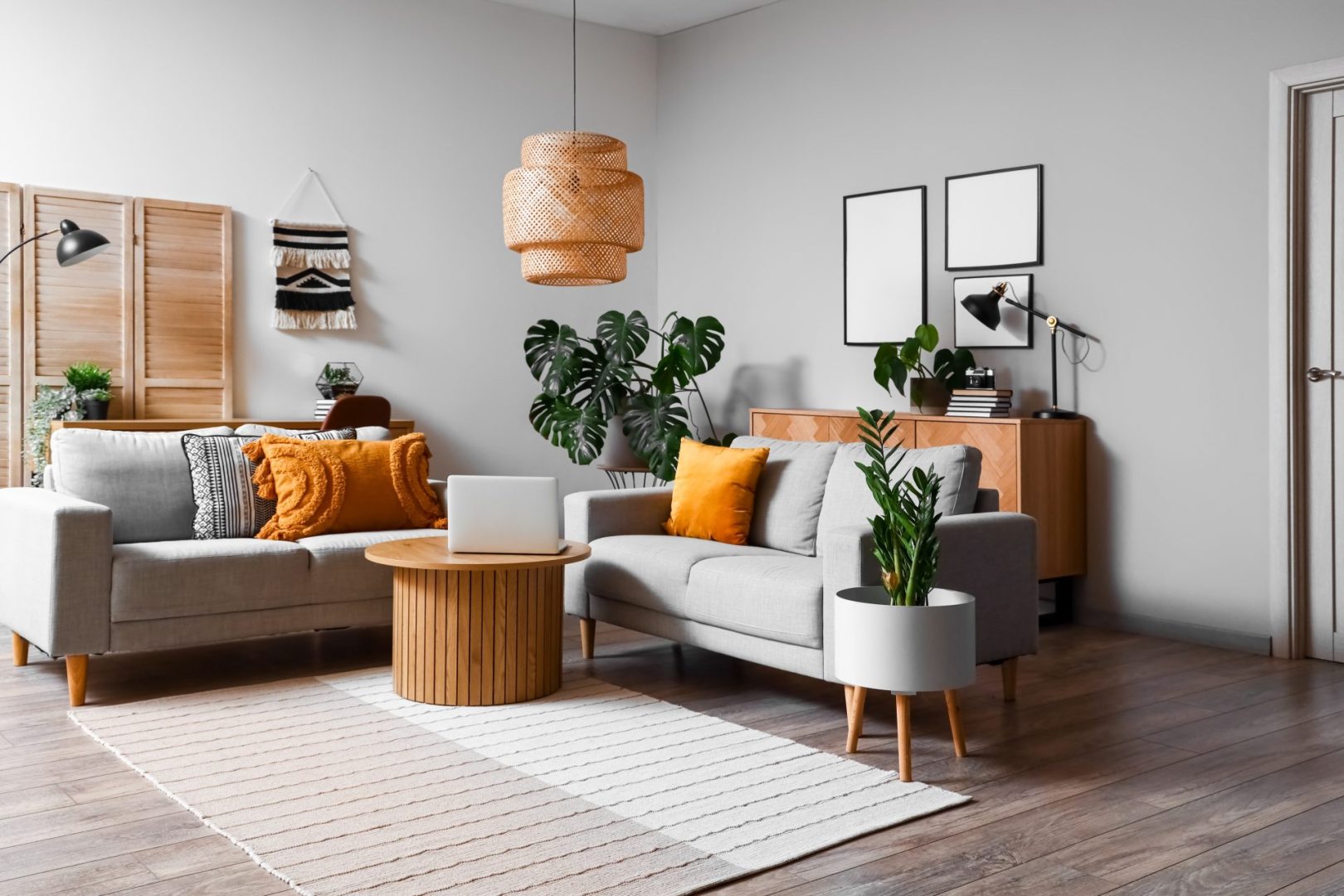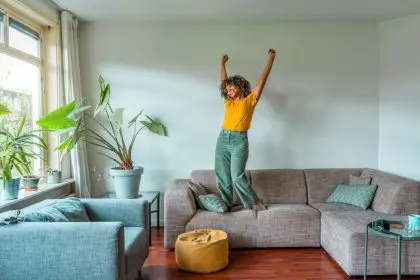The frustration of walking into a recently cleaned and organized home that somehow still feels chaotic and overwhelming has puzzled countless homeowners. Despite spending hours tidying, arranging, and organizing belongings, certain rooms continue to emanate an unsettling sense of visual disorder that defies logical explanation.
This perplexing phenomenon rarely stems from actual messiness or inadequate cleaning habits. Instead, subtle decorating decisions and arrangement choices create psychological impressions of clutter that persist regardless of how meticulously organized the physical space remains. Understanding these visual triggers empowers homeowners to create spaces that feel as calm and serene as they actually are.
The human brain processes visual information through complex patterns that influence emotional responses to physical environments. Certain color combinations, furniture arrangements, and decorative elements can overwhelm these processing systems, creating stress responses similar to those triggered by genuine disorder and chaos.
Modern homes often accumulate decorative elements gradually over time, with each individual addition seeming reasonable and attractive in isolation. However, the cumulative effect of multiple well-intentioned design choices can create sensory overload that transforms peaceful spaces into visually exhausting environments.
Recognizing these common decorating pitfalls allows for targeted corrections that dramatically improve room atmospheres without requiring major renovations or expensive purchases. Small adjustments in approach and arrangement often yield remarkable improvements in how spaces feel and function.
Understanding visual clutter psychology
The human eye and brain work together to process environmental information through sophisticated systems that seek patterns, balance, and logical organization. When decorative elements conflict with these natural processing preferences, the result creates mental fatigue and emotional discomfort even in physically organized spaces.
Color harmony plays a fundamental role in how spaces feel to occupants and visitors. Too many competing colors force the brain to work harder to process visual information, creating underlying stress that manifests as feelings of chaos or disorder. This effect occurs regardless of how neatly items are arranged or organized.
Pattern mixing, while potentially beautiful when executed skillfully, can easily overwhelm visual processing systems when taken too far. Multiple competing patterns in fabrics, wallpapers, rugs, and accessories create visual noise that makes spaces feel busy and cluttered even when every item has its designated place.
Scale relationships between furniture pieces and decorative elements significantly impact how organized and peaceful rooms appear. When these proportional relationships feel off-balance, the resulting visual tension creates impressions of disorder that persist regardless of actual cleanliness and organization levels.
1. Overwhelming color palettes that compete for attention
The most common source of visual clutter in well-organized homes involves color schemes that include too many competing hues without sufficient unifying elements. While bold colors can create beautiful focal points, using multiple bright or saturated colors throughout a single space overwhelms the visual system and creates feelings of chaos.
Successful color palettes typically rely on one or two main colors with carefully chosen accent colors that complement rather than compete with the primary scheme. This approach allows for visual interest while maintaining the harmony necessary for peaceful, organized-feeling environments.
Neutral backgrounds provide essential visual rest areas that prevent color fatigue and allow accent colors to shine without overwhelming the space. Walls, large furniture pieces, and major textile elements work best in calming neutral tones that support rather than compete with decorative accent pieces.
The 60-30-10 rule offers a practical framework for balanced color distribution, with 60 percent of the room in a dominant neutral color, 30 percent in a secondary color, and 10 percent in accent colors. This proportion creates visual hierarchy while preventing any single color from overwhelming the others.
Monochromatic schemes using various shades and tones of a single color family create sophisticated, calming environments that feel inherently organized and peaceful. These approaches prove particularly effective in bedrooms and bathrooms where relaxation takes priority over visual stimulation.
2. Excessive pattern mixing without visual breaks
Pattern enthusiasm often leads to decorative choices that individually appear attractive but collectively create visual chaos. Stripes, florals, geometrics, and abstract patterns each demand visual attention, and combining multiple patterns without careful consideration results in sensory overload that makes spaces feel cluttered and overwhelming.
Successful pattern mixing requires varying scales and limiting color palettes to create cohesion among different design elements. Large-scale patterns work well with small-scale patterns, while medium-scale patterns often compete rather than complement each other when used together.
Visual breathing room between patterned elements allows the eye to rest and process individual design choices without becoming overwhelmed. Solid-colored elements strategically placed between patterned pieces create necessary buffers that prevent visual chaos.
The two-pattern rule provides a conservative approach that almost always succeeds, limiting spaces to one bold pattern and one subtle pattern while keeping everything else in solid colors. This restraint creates sophisticated, organized-feeling environments without sacrificing visual interest.
Pattern placement affects visual impact significantly, with eye-level patterns creating more visual weight than floor-level or ceiling-level patterns. Understanding these hierarchy effects helps in making strategic placement decisions that enhance rather than overwhelm room atmospheres.
3. Furniture arrangements that block natural flow
Room layouts that impede natural movement patterns create subconscious stress that manifests as feelings of clutter and disorganization, even when every item is perfectly placed and organized. Furniture arrangements should support rather than hinder the human tendency to move through spaces in logical, comfortable patterns.
Traffic flow paths need adequate width to feel comfortable and natural, with 30 inches representing the minimum width for primary pathways and 24 inches for secondary routes. Narrower passages create bottleneck effects that make rooms feel cramped and cluttered regardless of actual organization levels.
Furniture floating in room centers without clear purpose or relationship to walls and other elements creates visual confusion that registers as clutter in the subconscious mind. Every piece should have obvious functional relationships to other elements and clear reasons for its specific placement.
Doorway and window blocking disrupts natural light flow and movement patterns while creating visual obstacles that contribute to cluttered feelings. Keeping these architectural features clear and accessible improves both functional flow and psychological comfort levels.
Scale relationships between furniture pieces and room dimensions significantly impact how organized and peaceful spaces feel. Oversized furniture in small rooms creates cramped feelings, while undersized pieces in large rooms create scattered, disorganized impressions.
4. Inadequate lighting that creates visual confusion
Poor lighting conditions make even perfectly organized spaces feel chaotic and uncomfortable by creating harsh shadows, uneven illumination, and visual confusion that strain the eyes and create psychological stress. Proper lighting design involves layering different types of illumination to create balanced, comfortable environments.
Single overhead light sources create harsh shadows and uneven illumination that make rooms feel stark and unwelcoming while highlighting every minor imperfection or organizational flaw. Multiple light sources at different levels create more natural, flattering illumination that enhances rather than detracts from room organization.
Task lighting for specific activities prevents eye strain while creating focused illumination that makes spaces feel more organized and purposeful. Reading lamps, under-cabinet lighting, and desk lamps serve functional purposes while contributing to overall room ambiance.
Ambient lighting provides general room illumination that creates comfortable background light levels without harsh contrasts or deep shadows. This foundational lighting layer ensures that all areas of rooms receive adequate illumination for both function and visual comfort.
Accent lighting highlights specific decorative elements or architectural features while creating visual interest and depth. Strategic use of accent lighting draws attention to organized, attractive areas while de-emphasizing less perfect aspects of room arrangements.
5. Wall decor that lacks cohesive arrangement principles
Gallery walls and decorative wall arrangements often contribute to cluttered feelings when pieces lack unifying elements or logical organization principles. Random placement of artwork, photographs, and decorative objects creates visual chaos that overwhelms rather than enhances room atmospheres.
Successful wall arrangements typically follow grid systems, symmetrical patterns, or clear focal point hierarchies that create visual order and logical relationships between individual elements. These organizational principles help the eye process multiple pieces as unified compositions rather than competing individual elements.
Frame consistency or intentional frame variation following specific patterns creates visual cohesion among diverse artwork and photographs. Matching frames unify disparate pieces, while varied frames following color or style themes can create interesting visual rhythms without chaos.
Spacing relationships between wall elements significantly impact how organized and intentional arrangements appear. Consistent spacing creates ordered impressions, while random spacing contributes to cluttered, haphazard feelings even when individual pieces are beautiful and appropriate.
Scale progression from larger central pieces to smaller surrounding elements creates visual hierarchy that guides the eye through wall arrangements in logical, comfortable patterns. This approach prevents the visual confusion that results from multiple competing focal points.
6. Storage solutions that create visual noise
Visible storage systems often contribute to cluttered feelings when they lack visual cohesion or contain too many competing elements. Open shelving, bookcases, and display areas require careful curation to enhance rather than detract from room organization and serenity.
Color coordination within storage displays creates visual calm by reducing the number of competing elements the eye must process. Grouping books by color, using matching storage containers, or limiting display items to specific color families dramatically improves visual organization.
Height variation in displayed items creates visual interest while maintaining organized appearances through rhythmic patterns rather than random placement. Alternating tall and short elements, or creating graduated height progressions, guides the eye through displays in comfortable, logical sequences.
Negative space within storage areas provides essential visual breathing room that prevents displays from appearing cramped or overwhelming. Leaving some shelves partially empty or creating intentional gaps between grouped items enhances rather than wastes storage potential.
Container consistency for visible storage items creates visual unity while maintaining functional organization. Using matching baskets, boxes, or organizers reduces visual clutter while improving actual storage efficiency and accessibility.
7. Decorative accessories that lack editing and restraint
The accumulation of decorative objects over time often results in collections that individually seem appropriate but collectively create visual overwhelm. Successful decorating requires ongoing editing and curation to maintain balanced, serene environments that feel organized and intentional.
The rule of odds suggests that groupings of three or five objects typically create more visually pleasing arrangements than even-numbered groupings, though this principle should be applied thoughtfully rather than rigidly throughout all decorative decisions.
Surface management prevents decorative accessories from creating cluttered impressions by maintaining clear, uncluttered areas that provide visual rest between decorated zones. Every surface need not contain decorative elements to feel complete and welcoming.
Seasonal rotation of decorative accessories prevents rooms from becoming visually stagnant while allowing for regular editing and curation of collections. This practice maintains freshness while preventing gradual accumulation of too many competing elements.
Quality over quantity applies particularly well to decorative accessories, with fewer high-quality, meaningful pieces creating more sophisticated, organized impressions than larger collections of lesser items. This approach also simplifies cleaning and maintenance while improving visual impact.
Implementation strategies for immediate improvement
Addressing visual clutter requires systematic evaluation of current decorating choices followed by strategic modifications that enhance rather than compromise personal style preferences. The goal involves creating harmony and balance rather than eliminating personality or visual interest from living spaces.
Room-by-room assessment helps identify specific problem areas while preventing overwhelming feelings about needed changes throughout entire homes. Focus on one space at a time allows for careful attention to details while building confidence through successful improvements.
Photography can reveal visual clutter that becomes invisible through daily familiarity with spaces. Taking pictures of rooms from multiple angles often highlights arrangement issues or visual conflicts that escape notice during regular use of the spaces.
Temporary removal of suspect elements allows for objective evaluation of their contributions to room atmospheres. Living without questionable decorative choices for several days often clarifies whether they enhance or detract from overall room harmony and organization.
Professional consultation may benefit homeowners who struggle to identify visual clutter sources or implement effective solutions independently. Interior design professionals bring objective perspectives and technical knowledge that can accelerate improvement processes while respecting personal preferences and budget constraints.
Creating visually organized, peaceful living environments requires understanding the psychological factors that influence how spaces feel regardless of their actual cleanliness and organization levels. By addressing these common decorating mistakes, homeowners can transform cluttered-feeling spaces into serene, welcoming environments that truly reflect their organizational efforts and personal style preferences.












